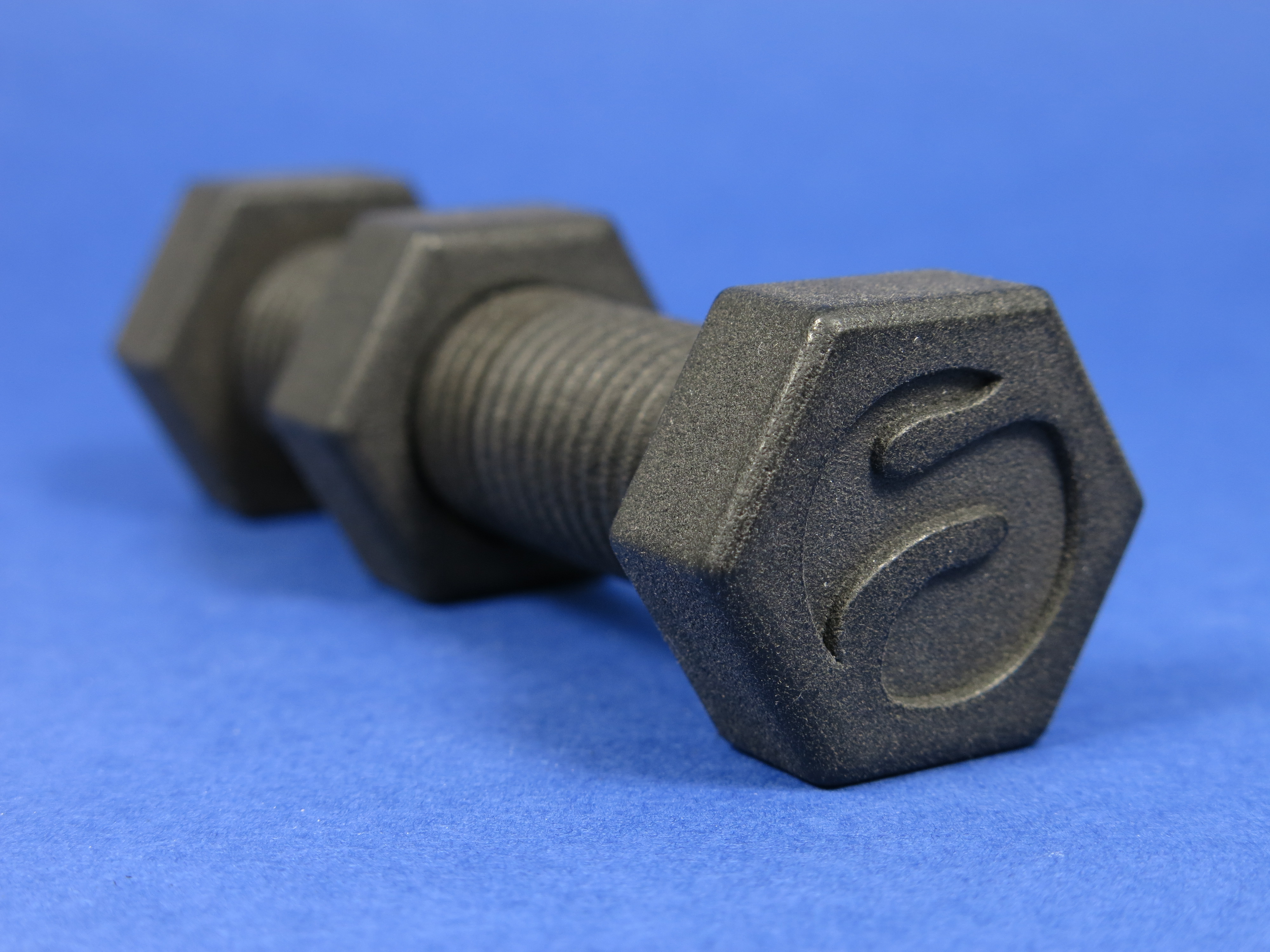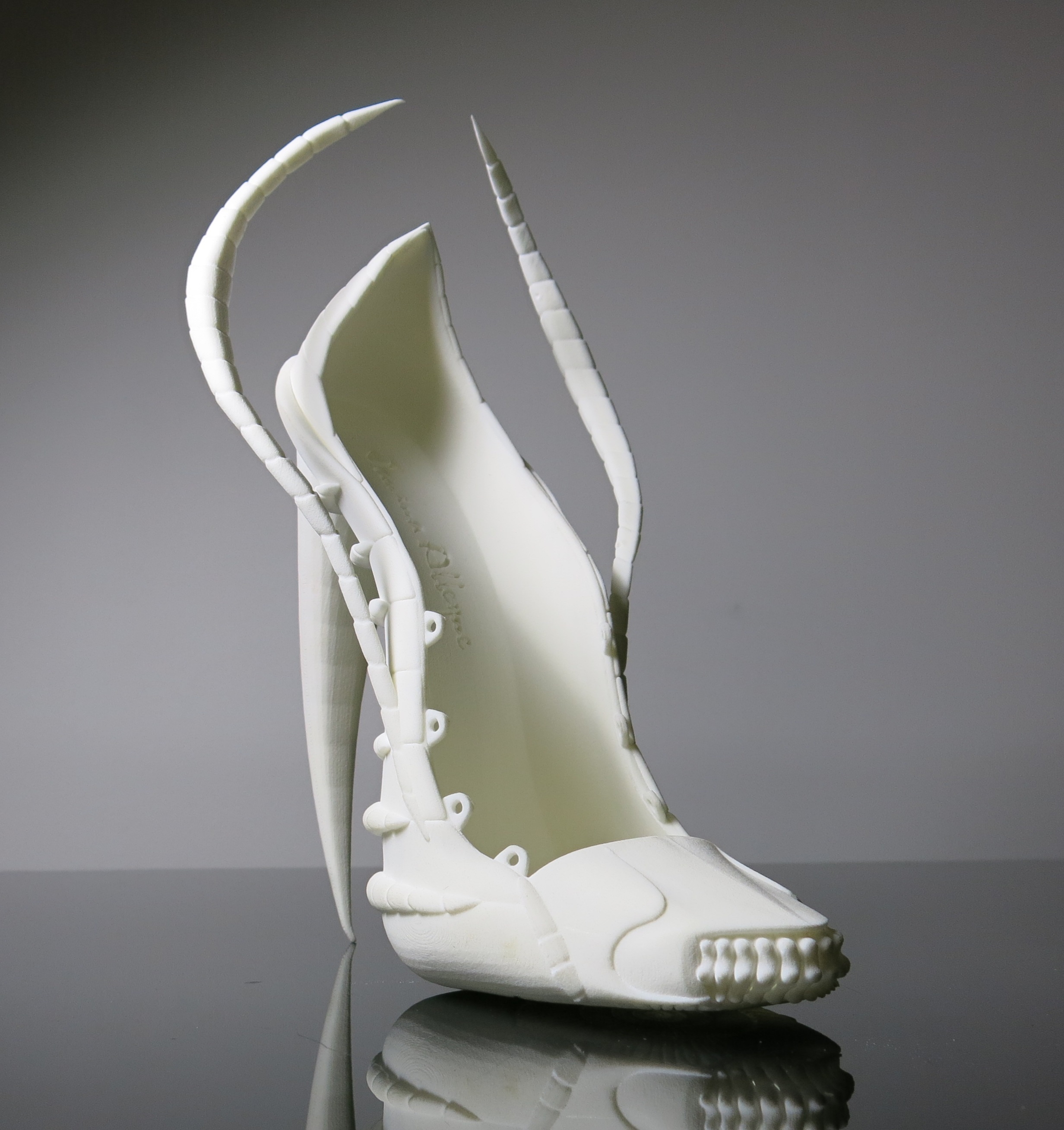The differences between polyamides PA11, PA12 and HP Multi Jet Fusion PA12
Posted By Melchior de Wargny on Sep 6, 2017 | 0 comments
PA11 and PA12, also known as Nylon 11 and Nylon 12, are polyamides that we offer in our selection of materials. Indeed, PA12 is in our plastic material and PA11 is our black plastic material. As for our grey plastic material, it combines both PA11 and PA12 to give off its color. Also, we recently added a new plastic material to our online 3D printing service: HP Multi Jet Fusion PA12. However, one question remains: Are there any differences between PA11, Nylon PA12, and HP Multi Jet Fusion PA12?
What is Nylon? What do the numbers mean?
Before we delve into the differences that can be noted between each polyamide, let’s look at what exactly is Nylon and what does the number 11 or 12 mean. Nylons have been around since 1935 and were the first commercially successful synthetic thermoplastic polymers. Nylon falls under the category of polyamides which include both natural substances (silk) and synthetic materials (thermoplastics). Nylons today are one of the most widely used materials for traditional thermoplastic manufacturing. Indeed, according to the State of 3D Printing, plastic (88%) is the most widely used material for 3D printing. As for the numbers that follow the abbreviation PA (which stands for Polyamide), it simply indicates the number of carbon atoms in the material.
What are PA11, Nylon PA12 and Multi Jet Fusion PA12 made from?
Nylon PA11 is a fine bioplastic polyamide powder; in our case, we use the mass-colored black version. The material is among the rare bio-based engineering plastics made out of renewable raw materials derived from vegetable oil, mainly castor oil. It is produced by Arkema, under the trade name Rilsan, from castor beans.
Unlike PA11, Nylon PA12 is a synthetic whitish fine powder derived mainly from petroleum sources. It is optimized as much as PA11 for the use as a laser sintering material. Nylon PA12 has many manufacturers which include Arkema and Evonik, whereas PA11 is only manufactured by Arkema.
Multijet Fusion PA12 is a specific type of fine PA12 Polyamide powder. Produced by HP, this material, which is also called 3D High Reusability PA12, is optimized for the Multi Jet Fusion technology to produce fully functioning parts.
What are the properties of PA11?
PA11 has properties quite similar to Nylon PA12. However, PA11 has a lower environmental impact, consumes less non-renewable resources to be produced, and has superior thermal resistance. Indeed, PA11 is stable to light, UV, and weather. It is also characterized by good elasticity, high elongation at break and high impact resistance, unlike some of the other materials offered by Sculpteo. Moreover, black polyamide has an excellent resistance to chemicals, especially hydrocarbons, aldehydes, ketones, alcohols, fuels, detergents, oils, fats, mineral bases, and salts.
What about Nylon PA12?
Nylon PA12, on the other hand, is exceptionally strong even when temperatures dip below freezing. It is characterized by high strength, stiffness, strong resistance to cracking under stress, and an excellent long-term constant behavior. Furthermore, with a lower concentration of amides (nitrogen-containing organic compounds) than any other commercially available polyamide, Nylon PA12 absorbs very little moisture, has an excellent resistance to chemicals including hydraulic fluids, oil, fuels, grease, salt water, and solvents, dampens noise and vibration, and is highly processable.
What are the properties of Multijet Fusion PA12?
Since our newest black plastic material is made from polyamide PA12 powder, the properties of Multijet Fusion PA12 are quite similar to the ones of Polyamide 12. Our Multijet Fusion PA12 has a good elasticity and a strong resistance to chemicals. This material allows to create complex shapes in a short period of time.
What are their typical applications?
PA11 is typically used for mechanically loaded functional prototypes and series parts with long-term moving elements such as hinges. In the automotive industry, it is mainly used for interior components for crash relevant parts. PA11 is also well suited for abrasively stressed and manually manipulated visible parts and is especially well suited for small to medium sized parts, thin walls, and lattice structures.
On the other hand, Nylon PA12’s and Multijet Fusion PA12’s typical applications go above those of PA11, as fully functional plastic parts of great quality can be produced using these two materials. Indeed, the excellent mechanical properties that these materials offer are often used to substitute typical injection molding plastics. Furthermore, the biocompatibility allows both materials to 3D print objects for medical applications such as prostheses, and the high abrasion resistance allows the realization of movable part connections like gears or hinges. Both PA12 materials are light stabilized and can create parts which are adaptable to every weather.
What kind of finishes can we apply on PA11, Nylon PA12 and Multi Jet Fusion PA12 objects?
Various finishing possibilities are generally available for Nylon PA12 objects. At Sculpteo, there are multiple coloring and finishing options available. As the objects printed come out white, colors can be applied whether it is through paint or dyes. Furthermore, Nylon PA12 objects can go through a number of post-treatment operations: they can be either polished, varnished, or go through a chemical smoothing process launched by Sculpteo, called Smoothing Beautifier. The process brings smoother to every section of the object and works by sealing the porous surface of the plastic parts.
PA11 as a whole does not offer this possibility. For black polyamide 11 more specifically, as the powder is a mass-colored black polyamide powder, parts are colored throughout the whole volume. This is a different process than the plastic colors offered on the website for polyamide 12 since other colors are dyed or painted. Moreover, as of today, Sculpteo only offers one post-treatment for PA11, which is polishing.
Regarding Multi Jet Fusion PA12, unpolished is the only finishing option offered at our online 3D printing service for now. However, the surface remains exceptionally smooth after coming out of a printer and is perfectly suited for the creation of finished products.
What about other Nylons?
A large number of polymers can be synthesized, which is why many nylon polymers have been made experimentally. However, a smaller number has been offered commercially. As a result, polyamides can be mainly divided into 3 types: the previously mentioned PA11 and Nylon PA12, and last but not least, PA6.
PA6 is normally made of recycled material, which makes it the cheapest among theses three types. Nylon 6 fibres are very hard and tough, possessing high tensile strength, as well as elasticity and luster, even at low temperatures. PA6 is generally white but can be dyed.
Other less known commercial variations of polymers can be found: PA66, PA612, PA46…
At Sculpteo, we also offer a wide range of polyamide-based material that may suit your 3D printing needs:
- Alumide, created from a mix of polyamide powder and fine aluminum particles.
- CarbonMide which is created from a fine black plastic polyamide powder (PA12) reinforced with carbon-fibers.
- Nylon 3200 Glass-filled, a mix of polyamide powder and glass beads to create durable and highly resistant parts.
- PEBA 2301, our flexible plastic material made from a fine polyamide powder.
Technical specifications comparison
The following table is a little comparison between PA11, Nylon PA12 and Multijet Fusion PA12 on a more technical look:
| Mechanical Properties | Conditions | Unit | Nylon PA11 Values | Nylon PA12 Values | Multijet Fusion PA12 Values |
|---|---|---|---|---|---|
| Density of laser-sintered part | EOS-Method (Polyamides PA11, PA12)ASTM D792(MJF PA12) | g/cm3 | 0.99 | min. 0.90 / max. 0.95 | 1.01 |
| Tensile Modulus | ISO 527 (PA11, PA12)ASTM D638 (MJF PA12) | N/mm2 | 1585 ± 25 | 1700 ± 150 | 1700 |
| Tensile strength | ISO 527 (PA11, PA12)ASTM D638 (MJF PA12) | N/mm2 | 48 | 45 ± 3 | 48 |
| Elongation at break | ISO 527 (PA11, PA12)ASTM D638 (MJF PA12) | % | 36.5 ± 8.5 | 20 ± 5 | 20 |
| Melting point | ISO 11357 & DIN53736 (PA11, PA12)ASTM D3418 (MJF PA12) | °C | 201 | min. 172 / max. 180 | 187 |
You can also learn more about the technical specifications of each polyamide material: Nylon PA11, Nylon PA12, and Multijet Fusion PA12.
If you want to check out what objects made out of Nylon PA11, Nylon PA12 and Multijet Fusion look like, you can follow the links directed to our Plastic, Multijet Fusion PA12, Black Plastic or Grey Plastic materials.
You’ve learned about differences between Black Nylon PA11, Nylon 12 and Multijet Fusion PA12. Now it may be a time to decide which nylon material you’re going to use to 3D print your parts. To start, upload your 3D file here.


 Connect with Google
Connect with Google Connect with Facebook
Connect with Facebook


